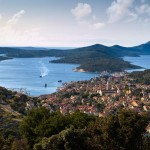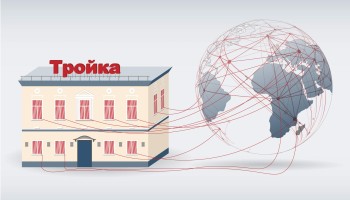OCCRP has maintained close ties with many people and organizations interested in this topic since its work on previous laundromat stories including the Proxy Platform, the Russian Laundromat, and the Azerbaijani Laundromat.
When OCCRP was offered a large stash of documents and bank transactions, we jumped at the chance. Our partner 15min.lt got a stash of supplemental records. (Read more about the data.)
To do the story, OCCRP reached out to its regular partners and invited them to participate. In all, 23 news organizations agreed, joining the Troika Laundromat team.
The data was complex and dirty, and required a lot of work. We also went to other sources to try to find more data that could help supplement the leak.
The resulting database of was examined by reporters from more than a dozen countries. Each partner started following the money for themselves. To share findings and compare notes, OCCRP set up a secure collaborative workspace where, over a period of months, reporters continuously discussed and debated their findings.
They followed the billions by digging through national and international registries of companies, with the assistance of OCCRP’s Investigative Dashboard researchers.
The searches proved challenging, as many of the companies the Laundromat used were using dummy directors and shareholders. Some, however, were well known from previous investigations, so the reporters knew where to look next. They peeled away layer after layer of corporate secrecy and, in some cases, came up empty.
That is where the collaboration came in.
Colleagues from one country would often recognize the names of companies and individuals dug up by reporters in other regions, enabling them to contribute essential insights and context to this strikingly globalized financial web.
The Offshore Leaks, Panama Papers, and Paradise Papers databases of the International Consortium of Investigative Reporters and Süddeutsche Zeitung were very useful in identifying how the Troika Laundromat was set up.
Reporters also wanted to know how it was possible for billions to flow undetected through some of the world’s biggest banks, so they asked both local and international banks.
The results of the team’s work can be read here, in media in multiple countries, and seen on TV in some media outlets, starting today and continuing over the coming weeks and months.
The outlets contributing to this project include:
Armenia - HETQ.am
Belgium - Knack
Bulgaria - Bivol.bg
Russia - meduza.io
Canada - Globe and Mail
Czech Republic - investigace.cz
Denmark - Berlingske
Finland - Yle (Finnish Broadcasting Company)
Germany - Süddeutsche Zeitung
Lithuania - 15min.lt
Netherlands - Platform Investico, De Groene Amsterdammer, Trouw
Moldova - Rise Moldova
Slovenia - Ostro
South Korea - Newstapa
Spain - El Periódico
Switzerland - Tamedia
United Kingdom - BBC, The Guardian
United States - Barrons; International Consortium of Investigative Journalists (ICIJ)
Global - OCCRP
Additional research provided by Transparency International.
OCCRP contributors include: Adem Kuric and Kenan Ibrovic, web production; Jason Papakheli, Samuel Gallicchio, and Friedrich Lindenberg, data analysis; and Edin Pasovic and Sergiu Brega, graphic design. Interactives designed by Quickdata (Romania); Researchers for OCCRP include Karina Shedrofsky, Jelter Meers and Katarina Sabados. OCCRP video team includes Sergiu Brega, Cristi Dimitriu, Madeleine May and Matt Sarnecki; with videography from Armenia - HETQ.am, Dana Chladek, Thierry Humeau and Ferran Masip. Promotion by Alex Cooper and Ilia Donskikh. Translation by Ilia Donskikh. Project coordinator was Paul Radu. Editors for OCCRP are Jodie DeJonge, Sharon L. Lynch, Ilya Lozovsky, Jody McPhillips, Drew Sullivan, and Julia Wallace.






